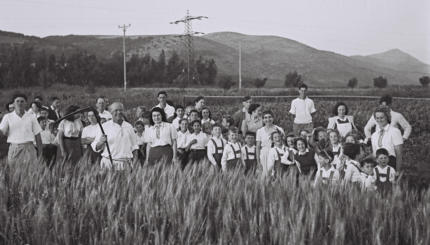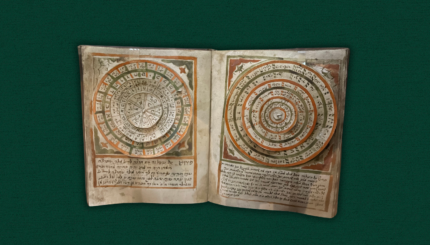The following are reflections from an Orthodox rabbi who was shunned by his community for standing up for LGBTQ rights.
I’ve recently had to transition out of a position where I could provide spiritual shade, shelter, and sustenance for many of G-d’s children who have been denied sanctuary elsewhere. Today I exist uprooted, forsaken, and rejected. It’s the middle of the winter and the trees are barren. They look like they could blow over in the snowstorm. I feel like these trees look, worried that the best days are behind me with my contribution to the world decomposing on the ground. How can we be asked to celebrate the birthday of the trees when they look like they are dying and should be eulogized?
The first Mishnah teaches that there are actually four “Rosh Hashanahs”: one of each for the kings, tithings, years, and the tree. The ‘tree’ stands alone — it’s the only one that is taught in the singular and the only one that does not fall on the first of the Jewish month, but rather the 15th (Tu Bishvat).
Fifteen, in the Jewish tradition, resonates fullness and blooming. There are 15 individual generations that descend from Abraham to King Solomon which parallel the waxing of the moon towards its fullest reflection of divine light. The Talmud compares us to the moon, having our source of light being God instead of the sun. There are fifteen years that all three of the lives of our forefathers overlapped. We find fifteen steps in the Haggadah that we read on the 15th of the month of Nissan corresponding to the 15 steps in the temple that the Levites would climb while singing 15 Shir Hama’alot; songs of ascension. But how are we meant to see and celebrate this fullness and blooming when the trees outside are barren?
King David praises God in Psalm 30 with an allusion to the month of Shevat. “ארוממך ה’ כי דליתני ולא שמחת איבי לי,” or “I will exalt you Hashem for you have drawn me up and not let my enemies rejoice over me.” The root of the word “דליתני” “to draw” can be understood to come from the word “דלי” meaning bucket, which is the astrological sign for the month of Shevat.
The mystics interpret the same word, “דלי” as relating to “דלת” door. The Talmud tells us that David’s transgression, lusting for a married woman and sending her husband to die in war, wasn’t motivated by sin, but it was intended “להורות תשובה ליחיד” to instruct the return of the individual. We are told that the doors to the temple that Solomon built wouldn’t open until the merit of King David was invoked. At that moment, the Talmud narrates, the faces of the haters of King David burned like the charred bottom of a pot realizing the one that they labeled as “other” was really the part that they were missing. It remains clear today, that communal passage into the holiest space is provided by the inclusion of the individual. When we deny entrance to a person who we think has sinned against God, we are all denied access to the Divine. Therefore, King David figuratively becomes a portal that others are welcome to enter through as individuals to come closer to God, demonstrated by the literal doors of the Holy Temple waiting for him to be invited.
Tradition teaches us that the 15th of Shevat is also the day that the sap returns to the tree. Like the soul to the body, the sap provides life and rejuvenation. We elevate ourselves by deepening our sensitivity to see that true life and holiness are often concealed in the protective disguise of feigned insignificance. Real rebirth and true living come when we emulate the tree that draws from within, in contrast to its perceived, outside value. Tu Bishvat instructs us to return to the well of spiritual hydration as an individual, for all individuals. While the tree may be barren today, I know that its most powerful source of life is not in the past nor in the passerby, but deep within its roots, that are expanding to provide for the next season of creative production.
Haggadah
Pronounced: huh-GAH-duh or hah-gah-DAH, Origin: Hebrew, literally "telling" or "recounting." A Haggadah is a book that is used to tell the story of the Exodus at the Passover seder. There are many versions available ranging from very traditional to nontraditional, and you can also make your own.
Shevat
Pronounced: shVAHT, Origin: Hebrew, Jewish month, usually coinciding with January-February.
Talmud
Pronounced: TALL-mud, Origin: Hebrew, the set of teachings and commentaries on the Torah that form the basis for Jewish law. Comprised of the Mishnah and the Gemara, it contains the opinions of thousands of rabbis from different periods in Jewish history.
Tu Bishvat
Pronounced: too bish-VAHT (oo as in boot), Origin: Hebrew, literally "the 15th of Shevat," the Jewish month that usually falls in January or February, this is a holiday celebrating the "new year of the trees."


